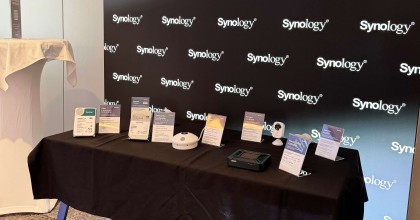Tablet or Laptop: How to Work Best Digitally in College?

Imagine sitting in a crowded lecture hall. All around you, students are tapping and clicking on various devices. Some appear frustrated, struggling with their laptops and short battery lives, while others work calmly and efficiently with lightweight tablets. During my university days, I belonged to the latter group. My journey led me from a cumbersome Surface Laptop, whose battery would give out after just 40 minutes in tablet mode, to a device that revolutionized the way I took study notes: the iPad Pro.
The iPad is not only incredibly powerful but also superior to a traditional laptop in many ways. It is lighter, more portable, and can be upgraded with a solid keyboard. Daily operation via the touchscreen is more intuitive and much more pleasant, unlike the often tedious touchscreen operation under Windows. With the Apple Pencil and the GoodNotes app, taking notes in my lectures transformed from a tedious obligation to a seamless, almost enjoyable experience. Documents can be captured with the high-resolution camera and edited directly.
But what makes the iPad such an ideal tool for studying? Let's take a closer look at this digital revolution.
Portability and Performance:
Tablet vs. Laptop in Daily University Life
When I chose my Surface Laptop, I was initially guided by the idea of acquiring a versatile device that offered all the necessary functions. I thought a Windows laptop, with its capability to run all programs, would be ideal for note-taking in university when used in tablet mode with a stylus.
However, this assumption quickly proved to be a mistake. Operating Windows via touchscreen turned out to be extremely cumbersome. The controls are often too small, and many actions require a right-click, which is triggered by a long press—a test of patience that quickly frustrated me. Moreover, I found that there are relatively few high-quality programs for Windows that would have been truly helpful for my studies.
Why is an iPad the only option for me?
In my professional life, I deal with a variety of systems and platforms, as my clients use devices from all major manufacturers such as Microsoft, Lenovo, Samsung, and Apple. I particularly want to highlight iPads, which are now available in various price ranges and are distinguished by their excellent durability.
One drawback upfront: the repairability of iPads is relatively difficult compared to a laptop because glued and soldered components predominate. Unfortunately, almost all other manufacturers do the same. In the tablet segment, I can think of no modular alternatives.
Over the past few years, Apple has greatly improved multitasking and also enabled the connection of external storage media via USB-C. This makes the iPad a sensible alternative to a laptop. Moreover, Apple offers an extensive range of apps, and although free apps have become rarer and digital subscriptions more common, this is a trend across the industry. Android tablets play a lesser role in my environment due to their limited app variety.
Apple Silicon processors give iPads good performance with high energy efficiency. Productivity apps like Microsoft Office are fully functional. Apple's Files app offers integrations with various cloud providers such as Microsoft OneDrive, Google Drive, and Synology Drive, making it possible to work without relying solely on Apple iCloud. Additionally, iPads receive software updates for many years. My clients often use older models that have been in use for five years or more and still function reliably.
The long availability of software updates is also interesting for those who might buy a refurbished device. Making some concessions here can save a lot of money.
Apple also offers several software tricks to conserve battery life. For example, charging above 80% is generally avoided, which helps the batteries last longer. This is crucial because battery replacement in tablets is usually a delicate affair since the displays are glued.
Consequently, the following advantages emerge for me:
- Strong variety of apps
- Available in various sizes
- Good battery life despite high performance
- Various models in different price ranges
- Input possible via stylus, keyboard, or touch
- Durability through good manufacturing and updates




How do I complete tasks that only work on a laptop?
Many of my clients often doubt the practicality of an iPad since it does not have a full desktop operating system and therefore is seemingly not suitable for all tasks. However, with creative solutions and the use of specialized apps, almost any task can be accomplished on an iPad. From graphic design with Affinity to video editing with LumaFusion or Final Cut, and screen sharing for presentations in online meetings – the range of application possibilities is constantly expanding.
In the academic context, I was able to complete numerous tasks effortlessly on an iPad during my studies. For writing research papers and managing sources, Zotero is ideal, which also has a web-based interface that is easily accessible through Safari. Similarly, Overleaf, a web-based LaTeX editor, allows for the creation of scientific documents directly in the browser.
In my professional life, almost all applications now run through a web browser. It is very likely that Google Chrome with the Chromium engine for iPadOS will soon be available in the EU, which almost guarantees the use of all browser applications. For applications that absolutely require a desktop system, there are efficient solutions. Many people still have a home computer, which they can access via remote desktop software like RustDesk. This solution enables text copying and pasting as well as file sharing and only requires an internet connection, which is usually available in universities or libraries.
An even more convenient, albeit paid, alternative is a cloud PC. Providers like Paperspace, Shadow, or Windows 365 offer a Windows-based cloud PC, and Hetzner Online even offers a macOS in the cloud with its Mac Minis. These providers make it possible to use complex programming environments on an iPad. Of course, this would also allow the use of CAD software, or games.









